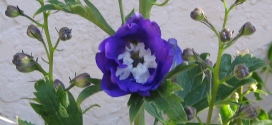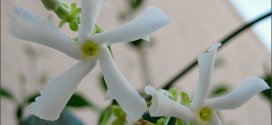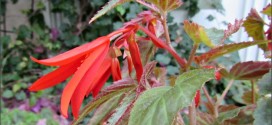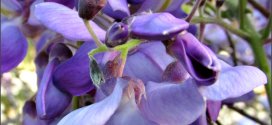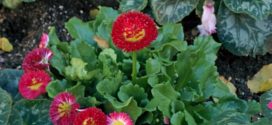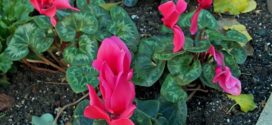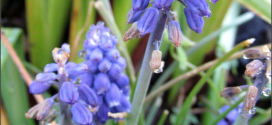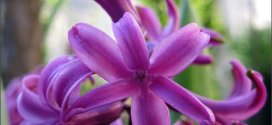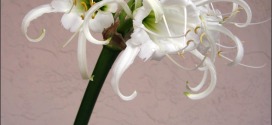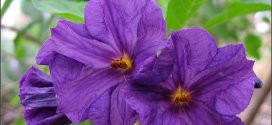Delphinium is a genus of about 300 species of perennial flowering plants in the family Ranunculaceae, native throughout the Northern Hemisphere and also on the high mountains of tropical Africa. All members of the Delphinium genus are toxic to humans and livestock. The common name “larkspur” is shared between perennial Delphinium species and annual species of the genus Consolida. Molecular …
Read More »Tag Archives: Danger
Star Jasmine
Star Jasmine has a wonderful scent in the evening. Our Star Jasmine plants grow in a 24-inch wide trench on the side of the driveway. They get afternoon sun. They handle drought. They handle no fertilizers. They are 40 years old. I have to keep pruning them to prevent them from growing up the wall. Like all jasmines (Star, Chilean, …
Read More »Begonia boliviens s. ‘Santa Cruz Sunset’
The Santa Cruz Sunset begonia has dramatic angled petals. These plants fall into the tropical and subtropical category of perennials, growing well in U.S. Department of Agriculture plant hardiness zones 6 through 11. Many varieties with ornamental leaves and blossoms grow well outside in USDA zones 10 and 11, while hardy begonias survive winters in USDA zones 6 through 9 …
Read More »Wisteria
Wisteria is a beautiful spring vine. Because of my visits to the California Spanish missions, I cannot think of Wisteria without thinking of California. Back in 2014, I planted my wisteria in probably the worst spot for it in my garden: a spot nestled in an east-facing corner that only gets a few hours of sunlight per day. All of …
Read More »English Daisy – Bellis perennis
English Daisies have long been popular for spring bedding, particularly in mild winter regions. Plants are biennial, usually lasting through one season, but self-seeding to provide future generations. This strain flowers well even in the first year, with little double button flowers of bright rose pink. Removing faded flowers regularly will keep plants blooming well into the summer. Often used …
Read More »Cyclamen – Latinia Salmon
Cyclamen is a great winter-flowering plant that loves light shade. You can grow in indoors or out. I am currently using them as a winter highlight in my former firepit. The red cyclamen is classic for the winter holidays. This salmon variety is also pretty. Strong stems bear vibrant, filly flowers well above attractive, silver-mottled leaves. In the summer, the …
Read More »Muscari – Grape Hyacinth
Grape Hyacinth is one of the first spring flowers and has a great fragrance. The first time you plant them should be in November. The plants naturalize (meaning that the next year’s flowers are the same). Severe poisoning from hyacinth or tulip poisoning is often seen when dogs dig up freshly planted bulbs or having access to a large bag …
Read More »Hyacinth
Dutch Hyacinth, Hyacinthus orientalis. Attractive to bees, butterflies and/or birds. Flowers are fragrant. This plant is suitable for growing indoors. Average Water Needs; Water regularly; do not overwater. Flowers are good for cutting Severe poisoning from hyacinth or tulip poisoning is often seen when dogs dig up freshly planted bulbs or having access to a large bag of them. When …
Read More »Lily – Spider
Hymenocallis is a wonderful genus of bulbous amaryllids…native mostly to the US, Mexico, and Central America. Hymenocallis (spider lilies) are an easy-to-grow moisture-lover that are a reliable perennial wildflower in the garden. Spider lilies are a tough, low maintenance plant which makes it perfect for rain gardens. In the wild many Hymenocallis (spider lilies) often grow in or near water …
Read More »Blue Potato Bush
The fragrant flowers of Blue Potato Bush (Lycianthes rantonnetii, also known as Solanum rantonnetii, and Paraguay nightshade), provide a focal point to a tropical or cottage garden. Surrounded by other sun-loving tropical and subtropical perennials, annuals and bulbs, the large shrub blooms year-round in frost-free gardens. Native to Argentina and Paraguay, the blue potato bush is hardy in U.S. Department …
Read More »